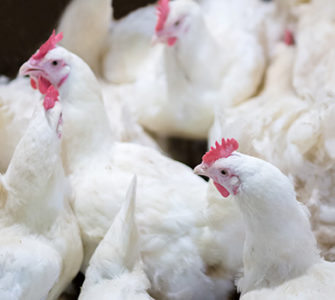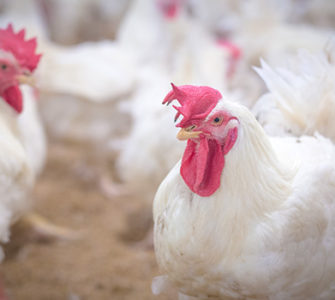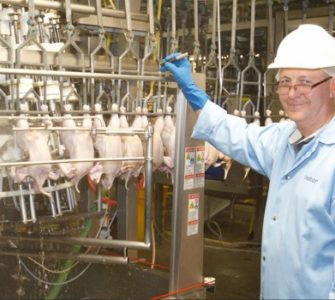Better management, biosecurity could mean lower Salmonella levels in NAE farms
New research has suggested that Salmonella levels in no-antibiotics-ever (NAE) poultry systems could be lower than those on conventional broiler farms.
Estefania Novoa Rama, a graduate research assistant at the University of Georgia, told Poultry Health Today that the difference could be due to better biosecurity and a sharper focus on management on NAE units.
In her study, Novoa Rama looked at four different farms — two with NAE systems and two that followed conventional practices.
On each farm, samples were taken from hatch to transport and at the processing plant, with testing done just after feed changes.
“We wanted to get a clean slate,” Novoa Rama said. “Every time there’s a feed change, we sampled right after. So we get kind of a representation of what’s happening in the microbiota with that feed change.”
A total of 15 birds were sampled at random each time, with contents taken from the cecum and ileum. Feed, water and litter were also sampled, with 229 samples taken from each farm in total.
The study used the same Salmonella sampling method as the Food Safety and Inspection Service uses in processing plants so that the results could be directly compared with that existing dataset.
Lower prevalence
Overall, the birds reared in conventional systems had a higher prevalence of Salmonella compared with the NAE-reared flocks.
The difference was most pronounced when birds were very young, but there was also a peak as they approached slaughter weight and when feed withdrawals and transport come into play, Novoa Rama said.
“[We expected this] because of the stress associated with those practices and also because of the increased shedding of pathogens that can create more opportunities for cross-contamination between flocks,” she said.
Rates were higher still in the slaughterhouse, she added. “Again, there’s a lot of potential for cross-contamination, and if the birds are shedding during transport and they’re in very confined places, it just creates a better environment for Salmonella to spread between birds.”
No Salmonella was found in feed and water samples.
Higher biosecurity reliance
Novoa Rama said the difference could be caused by NAE systems’ higher reliance on biosecurity to maintain bird health.
While it’s unlikely to be the only factor, not having antibiotics available as an intervention can focus farmers’ attention on management, she added.
“Usually, the NAE farms are just pristine. They’re very well managed,” she said.
“I don’t want to generalize; this is not all conventional farmers. But I do believe that to reduce the numbers of pathogen prevalence, a ‘multiple’-hurdles approach is the best way to go.
“So, as much as you were relying on an antibiotic or an anticoccidial, just paying attention to biosecurity and management will contribute to those low numbers.”
Posted on July 3, 2021

















